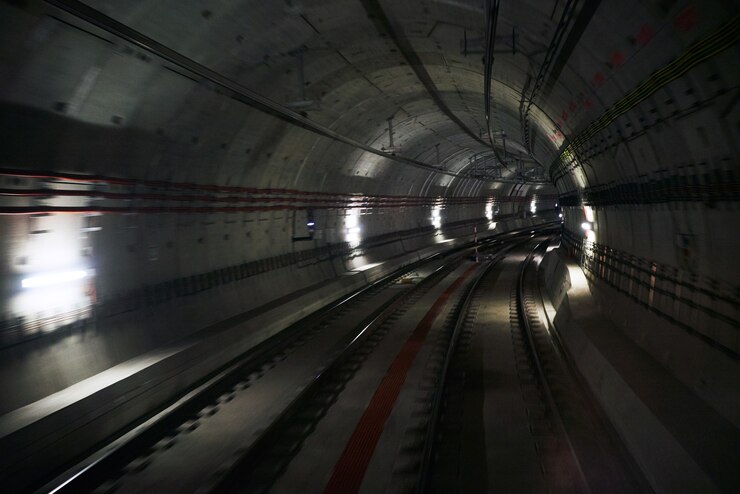India’s groundbreaking Mumbai-Ahmedabad bullet train project, a key initiative for advancing the nation’s infrastructure, has achieved a significant milestone with the completion of its first tunnel. This landmark development reflects India’s progress in adopting world-class engineering solutions to reshape its transportation landscape. This rail corridor will reduce the travel time upto 2.5hrs and also it will help in economic and infrastructure growth as well.
Tunnel Completion: A Pivotal Achievement
The National High-Speed Rail Corporation Limited (NHSRCL) announced the completion of a 350-meter-long tunnel in Vapi-Gujarat marking a critical step in the 508-km high-speed rail corridor. Constructed using the New Austrian Tunneling Method (NATM), the tunnel is engineered to meet stringent safety and operational standards.
Key features of the tunnel include:
- Advanced ventilation systems to ensure passenger safety.
- Emergency escape routes incorporated into the design.
- Reduced environmental impact due to precision engineering.
This tunnel, the first of several planned along the route, is part of an ambitious infrastructure strategy to revolutionize India’s transportation network.
Project Highlights
The Mumbai-Ahmedabad bullet train will utilize Japan’s Shinkansen E5 technology renowned for its speed, efficiency and safety. Significant details include:
- Top Speed: 320 km/h.
- Travel Duration: Journey time reduced from 6-7 hours to just 2.5hours.
- Stops: 12 strategically located stations connecting economic hubs.
This Indo-Japan collaborative project benefits from a combination of technical expertise and financial assistance from the Japanese International Cooperation Agency (JICA).
Overcoming Challenges
Tunnel construction presented several challenges:
- Geological Complexity: The route traverses diverse terrains, requiring precise excavation methods.
- Technical Collaboration: Integration of Indian and Japanese engineering expertise enabled efficient project execution.
- Environmental Considerations: NATM minimized disruptions to the surrounding ecosystem.
The project also overcame delays stemming from land acquisition and environmental clearances marking steady progress toward its 2027 completion target.
Transforming India’s Infrastructure
This high-speed rail project is more than a technological achievement; it represents a transformative step in India’s infrastructure development. Key benefits include:
- Enhanced Connectivity: Linking Mumbai and Ahmedabad strengthens regional trade and economic activity. Which will also lead to urban development.
- Eco-Friendly Transport: High-speed rail reduces reliance on fossil fuels and supports sustainability goals.
- Economic Growth: Development along the corridor will create job opportunities and promote urbanization. The total economic Internal Rate of Return stands at 11.8 percent.
Future Prospects
As of now, over 100 km of viaducts are under construction and additional tunnels and bridges are being built to meet project deadlines. This project serves as a blueprint for future high-speed rail initiatives in India with discussions underway to expand to other corridors.
By prioritizing sustainable and advanced transportation solutions India is laying the groundwork for a robust infrastructure that will serve generations to come. This tunnel completion is a testament to the country’s commitment to modernizing its transport networks while fostering economic growth and environmental sustainability.
